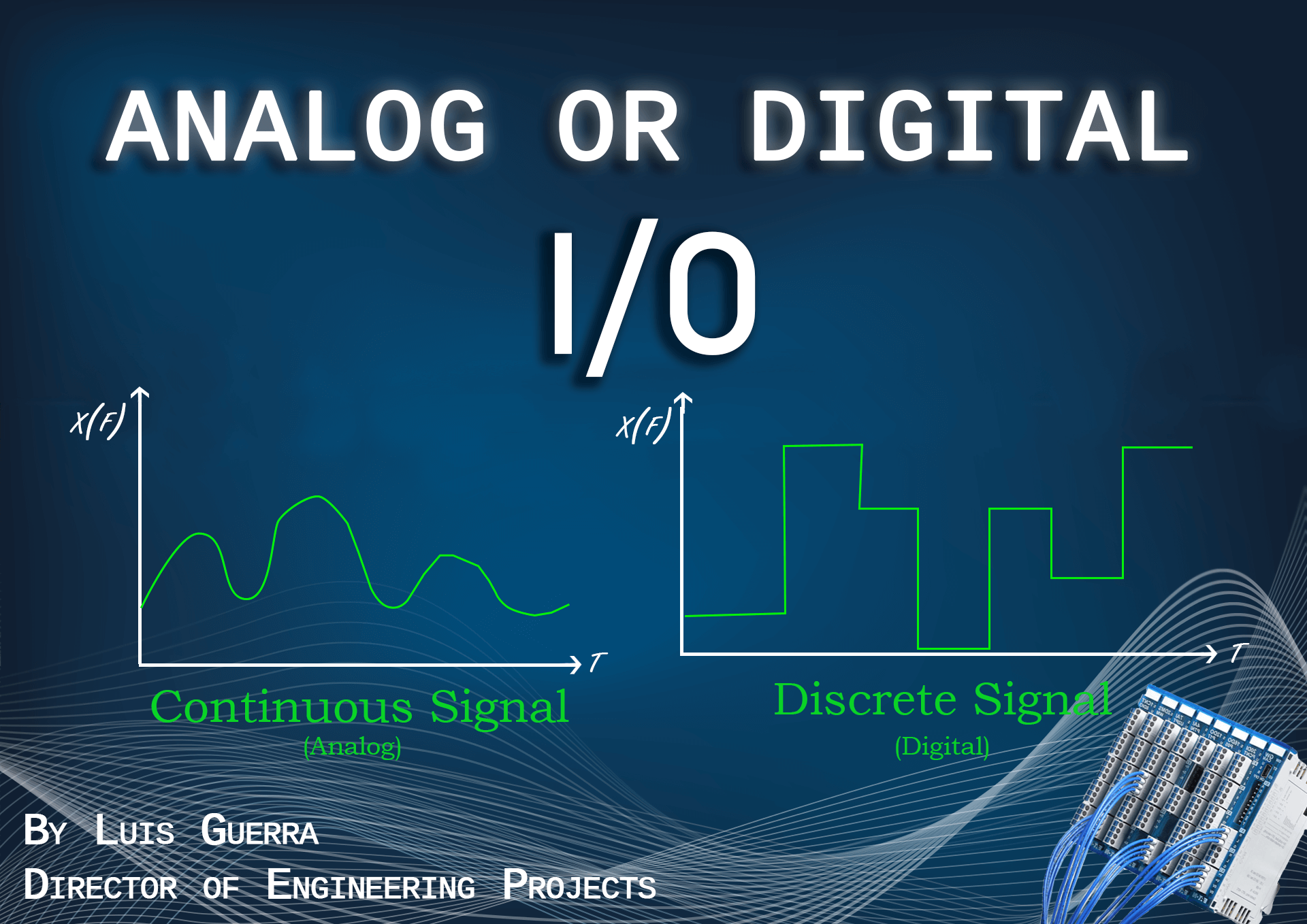By Luis Guerra, Engineering Projects Director at ICA Inc.
This blog explains the similarities, differences, characteristics, and some examples of digital and analog signals.
1-Discrete Signal (Digital)
In the world of Industrial Control, all signals whose possible values can be only and exclusively two states—the presence or absence of the signal—are known as digital or discrete signals. True / false, On / Off, etc. Etc.
Below, a shortlist of examples of discrete signals, and their meaning:
Discrete Sensor: Presence / Absence of an object in a given place
Feedback Signal: Indicates the status (on / off) of a motor, valve, light, etc.
A discreet button: Shows whether or not pulsed
Selector of # Positions Discrete: it indicates if it is or not in a certain position.
Protections Discrete Sign: It tells us if the protection was triggered or not.
Digital signal is the most common type of signal we will get in the industry.
2-Continuous Signal (Analog)
Unlike discrete signals, continuous signals better known as analog signals can have infinite values within a certain range of values. They represent the numerical magnitude of a variable that is either monitored (input) or controlled (output).
Next, a list of analog signals:
• Temperature value of an object
• Pressure Value in a Pipe
• Percentage of Opening of a Valve
• Value of the speed of rotation of an engine
By its own characteristic of being able to have infinite values within a known range, the use of certain standards to handle this type of signal has been standardized in the industry, the most used are the following.
• Voltage: 0..10 vdc, +/- 10 vdc, 1..5 vdc
• Current: 0..20 mA, +/- 20 mA, 4..20 mA
Moreover, when used in normalized ranges, the value of the variable is obtained with a simple calculation of interpolation.
For example, let’s take a Temperature Transmitter, whose measurement range is 0..1000 ºF, suppose that at a given moment it will have a value of 595 ºF, if we take this transmitter range that goes from 0..1000 ºF, and we use the normalized value of 0.10 vdc, when the temperature transmitter is reading 595 ºF, the voltage value at the transmitter output will be 5.95 Vdc.
However, if the normalized value to be used was 0..20 mA, the value at the transmitter output would be 11.9 mA
We hope that this short and simple summary of what digital and analog signals are has been helpful. If you are looking for engineering services or automation products in Miami and the rest of the United States, do not hesitate to contact us!

